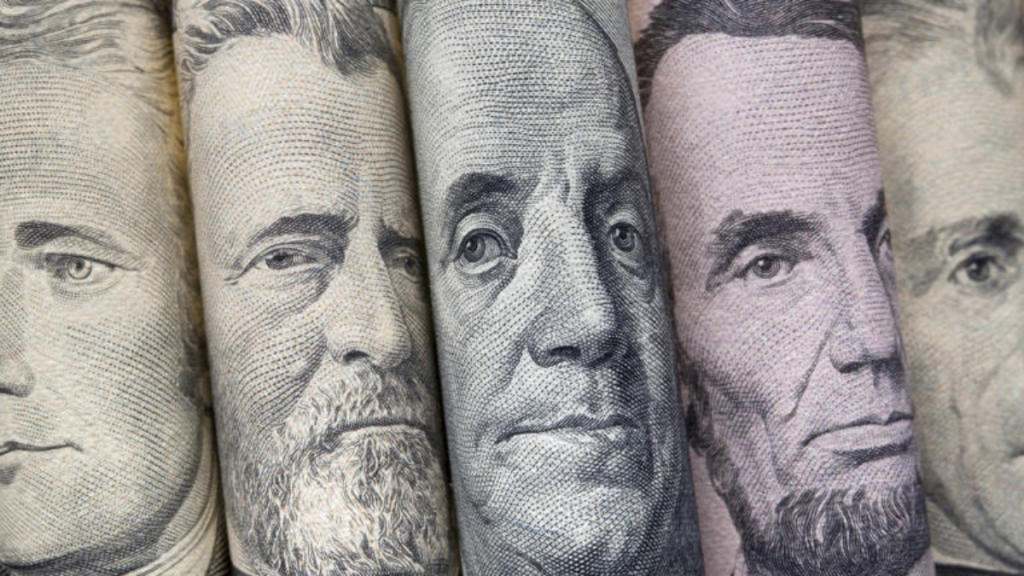Most people assume that the cash in their wallets is worth only its face value. However, certain rare and collectible bills could be worth far more than what they appear to be. Whether it’s a misprint, low serial number, or historical significance, some $2, $50, and $100 bills can fetch thousands of dollars from collectors.
If you have old or unique banknotes, you might want to check their serial numbers and condition. Here’s a list of 10 valuable U.S. bills that could turn your everyday cash into a hidden treasure.
Rare and Valuable $2 Bills
1. 1890 Treasury Note ($2,000 – $4,500+)
One of the rarest $2 bills, the 1890 Treasury Note, is known for its distinctive design featuring General James McPherson. Due to its age and scarcity, well-preserved versions can sell for over $4,000 at auction.
2. 1928 Red Seal $2 Bill ($300 – $1,000+)
The 1928 Red Seal $2 bill is valuable due to its low print numbers and historical significance. Uncirculated versions, especially those with unique serial numbers, can reach prices above $1,000.
3. 1976 Bicentennial $2 Bill with Star Notes ($50 – $500+)
Released to celebrate America’s bicentennial, the 1976 $2 bill is common, but Star Notes (denoted by a small star next to the serial number) are much rarer. High-grade bills can sell for hundreds of dollars.
4. 2003 $2 Bill with Low Serial Number ($50 – $400+)
Some 2003 $2 bills with low or repeating serial numbers (like 00000001 or 77777777) can command higher prices among collectors.
Valuable $50 Bills to Look Out For
5. 1914 Blue Seal $50 Federal Reserve Note ($500 – $5,000+)
Issued during the early 20th century, the 1914 Blue Seal $50 bill is highly collectible. Notes in excellent condition or with rare serial numbers can fetch thousands of dollars.
6. 1929 National Bank $50 Bill ($300 – $4,000+)
During the Great Depression, banks issued small-sized 1929 National Bank Notes with a brown seal. Depending on the bank of origin, some are valued at over $4,000.
7. 1996 $50 Bill with Misprints ($100 – $2,000+)
Printing errors, such as missing seals, misaligned text, or upside-down serial numbers, can significantly increase a bill’s value. Some misprinted 1996 $50 bills have sold for over $2,000.

High-Value $100 Bills That Are Worth More Than Face Value
8. 1928 Gold Certificate $100 Bill ($1,500 – $10,000+)
The 1928 Gold Certificate $100 bill was redeemable for gold and is now a prized collectible. Due to its historical value, well-preserved notes can be worth over $10,000.
9. 1934 North Africa Yellow Seal $100 Bill ($1,000 – $5,000+)
Issued during World War II, the 1934 Yellow Seal $100 bill was used by U.S. troops in North Africa. These rare notes are highly sought after and can sell for thousands of dollars.
10. 1990s $100 Bill with Star Note or Low Serial Number ($150 – $2,500+)
Collectors prize Star Notes and unique serial numbers on $100 bills from the 1990s. Uncirculated versions with low serial numbers can bring in over $2,500.
How to Determine If Your Bill Is Valuable
If you think you have a rare and valuable bill, here are a few ways to verify its worth:
- Check the Serial Number: Bills with low numbers, repeating patterns, or Star Notes are often worth more.
- Look for Printing Errors: Misprints, such as misaligned seals, missing serial numbers, or unusual ink errors, can significantly increase value.
- Research the Year and Series: Older bills or those from special Federal Reserve series tend to have higher collectible value.
- Get It Professionally Appraised: Contact a currency dealer or use online auction sites like Heritage Auctions or eBay to check market prices.
Conclusion
Your wallet or old cash collection could be hiding a valuable $2, $50, or $100 bill worth far more than its face value. Whether it’s an 1890 Treasury Note, a 1928 Gold Certificate, or a rare Star Note, these banknotes are sought after by collectors worldwide.
If you come across one of these rare bills, consider getting it graded and appraised, as its condition plays a major role in determining its true market value. Who knows? That $2 bill in your drawer or old $100 note in your wallet could turn into a small fortune!
For more on rare currency values, visit Heritage Auctions to check the latest auction results.
Disclaimer – Our team has carefully fact-checked this article to make sure it’s accurate and free from any misinformation. We’re dedicated to keeping our content honest and reliable for our readers.
